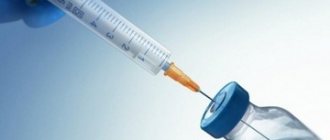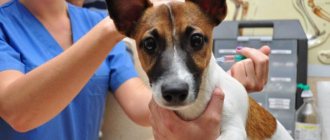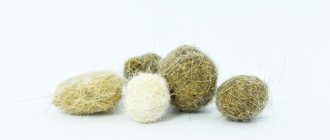Relaxing and therapeutic massage treatments are recommended not only for people, but also for pets. With their help, you can relieve muscle pain and even improve the functioning of the gastrointestinal tract. If you don’t know how to massage dogs, then you don’t have to constantly go to a veterinary clinic for this service. With enough practice, you can master the technique yourself.
When is massage indicated for a dog?
The procedure is carried out for therapeutic and preventive purposes. In the first case, it is prescribed in the presence of the following pathologies:
- Nervous disorders
. Massage actions relax the body, calming the nervous system. This helps to cope with stress and exciting events.
- Various pain syndromes
. Thanks to the stimulating effect, histamine production in the subcutaneous tissue improves. All spasmodic vessels dilate, so existing pain subsides or disappears completely.
- Injuries
. Stimulation of blood circulation improves metabolism, accelerating the regeneration of damaged tissues.
- Constipation
. The technique used improves intestinal motility, facilitating bowel movements.
- Diseases of the musculoskeletal system
(joint degeneration, paralysis). Stimulation of motor nerves and strengthening of muscle tissue make it easier for a sick animal to move, helping to restore lost function.
If the dog is completely healthy, then it is recommended to massage it for preventive purposes. Regular sessions will help maintain healthy bones and muscles until old age, as well as relieve fatigue accumulated during the day.
Types of massage
Depending on the goal being pursued, several techniques are distinguished. They can be divided into 3 large groups:
- Relaxing
. Suitable for relieving nervous tension and deep relaxation. All actions performed are focused on the spine area.
- Preventive
(wellness). Aimed at improving muscle tone and increasing the elasticity of joints and ligaments. This type is suitable for preventing chronic diseases and maintaining overall health.
- Medicinal
(rehabilitation). This group includes all varieties recommended for recovery after operations, injuries and diseases of the musculoskeletal system. With their help, the animal returns to its normal life.
Separately, it is worth highlighting the cosmetic appearance offered in grooming salons. It is a combination of a complex of care procedures and relaxing massage movements.
All of the above techniques can be performed at home. The only difficulty may arise with hydromassage, a type of medical procedure. It is carried out only in a limited number of veterinary clinics equipped with a special bath for ozone therapy.
Are there any contraindications?
Like any medical procedure, massage for dogs has a number of contraindications. These include the following conditions:
- any skin lesions (neoplasms, open wounds, inflammation, ulcers, eczema);
- fresh fractures with severe pain;
- acute or advanced kidney and liver diseases;
- heat;
- bleeding;
- epilepsy or shock.
Please note that even in the absence of the listed contraindications, you should consult a veterinarian before starting home sessions. He will not only select a more effective technique, but also explain its main nuances.
Electrotherapy
Since the time of Galvani, scientists have known that electric current has a multifaceted effect on the body. Since then, science has made great strides forward, but to this day electricity is used in two types:
- Low voltage and low frequency (galvanization and faradization). In this case, the blood supply to the affected areas is gently increased. In addition, moderate electric current has a good analgesic effect.
- High voltage and increased frequency (darsonvalization and ultra-high frequency therapy). These techniques have an even more pronounced analgesic effect, but their main effect is a significant acceleration of metabolic processes and tissue trophism.
Techniques for different types of massage
The massage movements used for four-legged pets are softer. Excessive force can cause harm, so it is important not only to time your efforts, but also to understand the peculiarities of canine physiology and anatomy.
Despite some differences, all available types involve the following hand movements:
- strokes that relax the body;
- fingertip tapping to help warm up the body at the very beginning;
- twisting, kneading tissue under the skin;
- rubbing, increasing blood flow and eliminating adhesions;
- compression (shaking) to relieve muscle spasms.
To obtain the desired results, you must devote at least 10 minutes to the procedure every day. At first, you should choose the minimum time to allow the animal to get used to unusual actions. If dissatisfaction appears (trembling, growling), it is recommended to stop the session.
Relaxing
First, prepare a flat surface by covering a table or regular floor with a soft cloth. You can put a muzzle on an aggressive pet, but you still shouldn’t abuse this accessory for a long time. Your pet should enjoy the session, so do not force him against his will.
After preparing a comfortable place, use the step-by-step algorithm that explains how to massage dogs:
- Start with light strokes. Use your fingertips and the inside of your palm to move around your entire body. Scratch the scruff of the neck and be sure to praise your pet so that he feels safe and as relaxed as possible.
- Massage your neck in a circular motion, moving from top to bottom. Perform all movements smoothly so as not to damage the vertebrae.
- Knead your ears and surrounding area. Be careful. The area between the ears is especially sensitive, as there are many nerve endings there.
- Using similar circular movements, stretch your shoulders and rotate the ponytail around its axis three times in different directions.
- Complete the procedure by stroking, moving from the back of the head to the tail.
Despite interaction with a rather limited number of areas (ears, withers, back, tail), relaxation occurs throughout the body. This occurs thanks to the neurons of the spinal column, which transmit signals even to the most distant areas.
Anesthetic
The technique for performing this type is similar to a relaxing massage for dogs, focusing on the back. The only difference is that the working area will depend on the location of the source of pain.
Use stroking, rubbing and light twisting, but do not directly affect the source of pain. You should also avoid contact with existing tumors. Stimulating blood circulation can affect their growth.
If your pet's paws hurt, use the tips recommended for paralysis. In other cases, you can adhere to the relaxation technique algorithm.
Medicinal
The technique for performing this type depends on the problem at hand. It is prescribed for constipation, paralysis, recent stroke, mastitis, dysplasia, arthritis and other pathologies.
If your pet has been diagnosed with a disease that requires a course of massage sessions, discuss this issue with your veterinarian. He will explain which area should be given the most attention and with what force it is permissible to massage problem areas.
For good peristalsis
Immediately after birth, the mother monitors peristalsis, regularly kneading the babies’ tummies with her paws and tongue. But intestinal problems bother dogs even at an older age. At this point, taking care of their health falls entirely on the owner.
To prevent constipation, you need to regularly massage your sides and stomach, moving clockwise. Start the procedure with light circular strokes at the chest and smoothly move towards the tail, gradually increasing the diameter of the working area and the intensity of palpation. The appearance of gurgling sounds during the procedure is a normal reaction, confirming the effectiveness of the therapy used.
Avoid putting too much pressure on the abdominal wall. It can damage internal organs. It is also recommended not to touch the groin area. Such touches cause a negative reaction in most animals.
For paralysis
For problems with the musculoskeletal system, it is recommended to focus on twisting and shaking. With their help, you can restore damaged muscles and nerves.
During the session, do the following:
- Calm your pet with light stroking of the entire body. Move to the paws as soon as he relaxes.
- Stroke one of the sore limbs, moving from its base straight to the heels. Gently bend it at the elbow or knee. Return the paw to its original position and repeat the previous action 4 more times.
- Massage the limb in a circular motion, moving from the inner surface to the outer. Having reached your heels, repeat the above steps 3 more times.
- Rub your hand or foot vigorously, not forgetting the space between your toes. Control the force used so as not to harm the animal.
After massaging one of your dog's paws, immediately move on to the other. Please note that it is necessary to act not only on the sore limb, but on everything at once.
Diagnosis of the disease
To make a correct diagnosis, the veterinarian conducts a number of studies:
- Analysis of biochemical blood parameters.
- General analysis.
- Neurological tests: with a calm step, the doctor evaluates the position of the animal’s head, back, limbs, and the tone of its muscles;
- the ability to run, jump, climb up and down from elevated positions is assessed;
- reflexes are checked;
- the pain threshold is examined by pinching the skin between the phalanges of the fingers, while the dog must withdraw its paw and bite; if it only whines, this means that sensitivity is reduced.
We recommend reading: Dog Poisoning First Aid
In addition to tests and instrumental studies, the veterinarian will ask the owner in detail about the symptoms that the dog has, and by combining all the results obtained, he will be able to make the correct diagnosis.









